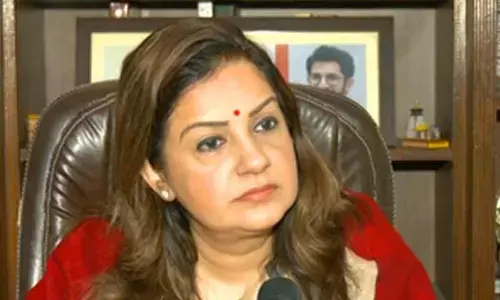Fuel efficiency on board: APSRTC

Fuel Efficiency on Board: APSRTC, Fuel Efficiency improvement, Fuel Saving Awareness. India already has a fat crude import bill which consists of 80% sizable foreign exchange. The rest of the 20% is made available indigenously
“The drive on fuel efficiency improvement is a never ending programme in APSRTC and we are conducting fuel saving awareness weeks every month of January, highlighting the need for saving and conserving. With the commitment and dedication of our employees, APSRTC is able to maintain good performance consistently over the years. As fuel efficiency improvement and emission control go side by side, APSRTC is also contributing to a cleaner environment to a great extent by implementing stringent fuel efficiency systems. Apart from conserving conventional fuels, APSRTC is also making efforts to use alternate fuels like compressed gas and bio diesel on a large scale,”
Fuel efficiency norms were laid out by the Bureau of Energy Efficiency (BEE), ministry of power, as a corporate/fleet average system similar to the standards in Europe. A fixed formula would decide the fuel efficiency target for each company, based on the average weight of its entire fleet. Those in the heavier categories would thus have a more relaxed fuel economy target to meet. But those with lower average weight for the fleet would find it more stringent.
India already has a fat crude import bill which consists of 80% sizable foreign exchange. The rest of the 20% is made available indigenously. The number of two-wheelers, cars, trucks and buses are increasing rapidly. In the years to come, therefore, India’s crude import liability is bound to soar. So, it is essential to ensure that our automobiles travel longer distances with lesser fuel. By ensuring this, India can, to some extent, rein in its spiralling crude oil import. Apart from this, India should race ahead to improve its mass transit infrastructure and the roads and rail network, so that people take to travelling by buses and trains than by cars.
C Jaya Rao, executive director, (e &it) APSRTC, said, “There is a compelling need for STU (State Transport Undertakings ) to make serious efforts towards fuel efficiency improvement in the present circumstances of rapidly escalating fuel prices in India. The very existence of public transport undertakings is at risk because of unbearable effect of fuel costs on the operational viability of the STUs. The STUs are helpless and have to absorb the entire burden of fuel price hike instead of passing it on to the commuters. This is because there are complex procedures involved in increasing their ticket fares.”
He, added that the APSRTC is the oldest (1932) and one of the best transport industry in India and the largest in the world. It has topped in many productivity and efficiency parameters in fuel, mileage, best driving and operational efficiency among the 68 transport industries in India. It carries 1.51 crore passengers daily and travel 82 lakh kilometres per day.
APSRTC spends about Rs 3,200 crore annually towards procurement of 60 crore litres of High Speed Diesel and 1 crore kgs of CNG. This constitutes 34% of the total expenditure of the corporation. It has a total fleet of 22,528 (18,833 own and 3,695 on hire) with 216 depots, occupancy ratio of 72% and a fuel efficiency of 5.13 km/lit. Measures taken for fuel conservation and efficient improvement way back in 1980, had yielded good results in a phased manner, but with the cost of fuel increasing constantly, they are unable to generate surplus.
The performance of the fuel use management and its efficiency is reviewed depot wise, region wise and zone wise very critically from the corporate office by uploading the data in the internal server, which can be accessed by every employee of the corporation. The fuel performance is analysed by classifying it into different categories of vehicles. Similarly the classification is also made based on driver wise kilometres per litre (kmpl).
The regions/ depots which has a number of drivers who belong to the low performance range (ie, less than 5 KMPL) are alerted and corrective action is taken. In addition, the vehicle manufacturers are also regularly consulted for necessary technical support, implementation of new concepts, technological modifications and new methodologies related to improvement of fuel efficiency. Special training programmes are organised to the maintenance staff & drivers on upgrading their technical and driving skills whenever new products are introduced. Utmost priority is given for providing greater support in supply of spare parts and unit aggregates from zonal stores and workshops to the depots with respect to improvement of fuel efficiency.
“The drive on fuel efficiency improvement is a never ending programme in APSRTC and we are conducting fuel saving awareness weeks every month of January, highlighting the need for saving and conserving. With the commitment and dedication of our employees, APSRTC is able to maintain good performance consistently over the years. As fuel efficiency improvement and emission control go side by side, APSRTC is also contributing to a cleaner environment to a great extent by implementing stringent fuel efficiency systems. Apart from conserving conventional fuels, APSRTC is also making efforts to use alternate fuels like compressed gas and bio diesel on a large scale,” said Jaya Rao.








